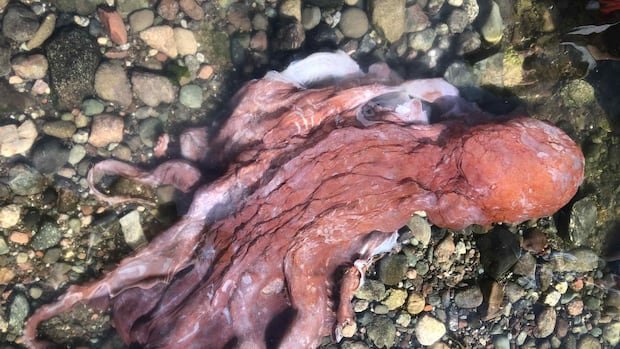A researcher from Washington state has made an exciting discovery by spotting what she believes is a seven-arm octopus, a species typically found in the Atlantic Ocean, along the coast of British Columbia. The finding occurred in August when Kathleen Durant, a resident of Pender Island, stumbled upon a peculiar sight resembling a large red jellyfish while walking her dog on the beach. Upon closer inspection, she noticed an eye on the creature.
Curious to identify the mysterious creature, Durant shared images of it on the Field Naturalists of Vancouver Island Facebook page. Marine biologist Casey Cook, upon seeing the images, recognized that it was not a local species based on the anatomy visible in the photos. Despite some speculations suggesting it might be a squid, Cook determined from the suction cups on its arms that it was, in fact, an octopus.
After conducting research and comparing images, Cook confirmed that the specimen was a seven-arm octopus, scientifically known as Haliphron atlanticus, also referred to as a septopus or blob octopus. Although the species is primarily found in the Atlantic, there have been a few sightings of seven-arm octopuses along the Pacific coast in recent years.
The male seven-arm octopus, as Cook explained, possesses eight arms, with the eighth arm called a hectocotylus, which is used for reproduction. While in females all eight arms are visible, males conceal the hectocotylus behind their eye. The reasons for the presence of these octopuses in Pacific waters remain uncertain, with Cook suggesting that changing climates and currents could be contributing factors.
Despite the rarity of these sightings, Cook emphasized the importance of ongoing research in understanding these enigmatic creatures in the depths of the Salish Sea. While the likelihood of the octopus being a native Pacific species is low, the possibility remains that it could be adapting to the region. Cook noted that the specimen appeared healthy and unharmed, indicating its well-being in the environment.


